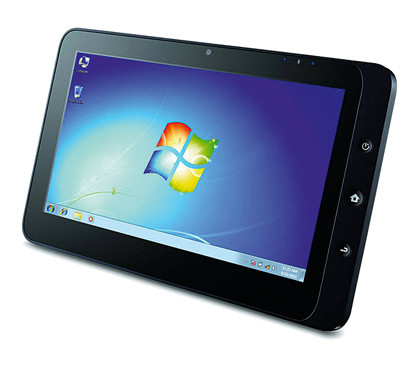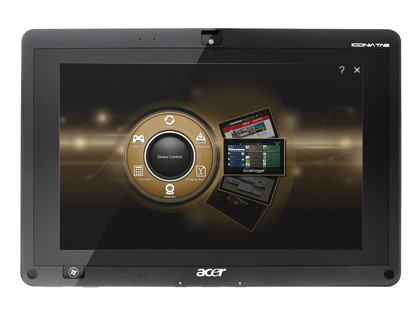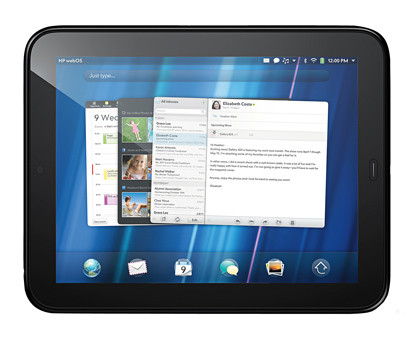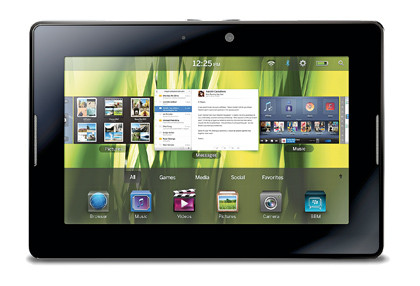Tablet operating systems compared
A beginner's guide to the major tablet operating systems
Microsoft Windows

Android and iOS may be the top operating systems for tablets, but that doesn't mean other manufacturers aren't having a go at toppling the big guys. Microsoft is currently nowhere in tablets and that means no Windows on tablets - yet.
Here's a little background. The software giant previously tried making tablets with full-blown Windows on it and succeeded to a small extent. There was a special version of Windows, the XP Tablet PC Edition, in 2002 which used a stylus instead of touch. Subsequent versions of Windows have included support for this natively. Convertible tablets were made by HP and others. These looked and worked like laptops but the keyboard could swivel back under the screen.
Last year, when Microsoft previewed the excellent Windows Phone 7 - now launched - there was a lot of speculation that it would also be made available for tablets. And, although the OS would be great on a tablet, Microsoft has constantly denied that it will happen.
And the proof would appear to be in Microsoft's latest announcement, made in January at this year's Consumer Electronics Show in Las Vegas. At the show the corporation announced that the next-generation Windows - Windows 8 as it's currently being called - will be able to run on ARM-based hardware, the same hardware that's currently inside mobile phones and tablets such as the Android-based models and the iPad.

At the moment Windows runs on either Intel-based processors or AMD-based processors - only Windows Phone 7 that can run on ARM. The big news in terms of this is that we'll finally see some decent tablets running Windows.
There are some that already run full-blown Windows 7 - such as the Viewsonic 10s and Acer Iconia W500 - but while Microsoft likes to say that Windows 7 was designed for touch, the simple fact is that it just doesn't function as well as iOS, Android, or any other operating system specifically designed with touch in mind.
Get daily insight, inspiration and deals in your inbox
Sign up for breaking news, reviews, opinion, top tech deals, and more.
Windows 8 will have a completely redesigned interface and will include special concessions for touch - the benefit here is that apps will be able to be designed that will work equally well across Windows personal computers as well as they do on tablets.
Windows 8 will also have instant-on capabilities, removing the traditional PC startup that has become the bane of many working lives. There will also be major work done to ensure that Windows does not consume huge amounts of power.
webOs

There are two other tablet operating systems you need to know about. The first is inside the BlackBerry PlayBook, called the BlackBerry Tablet OS. The second is HP's tablet OS, called webOS.
webOS started life in the 2009 Palm Pre smartphone and, HP bought Palm in 2010 and immediately said it would be using webOS in other devices. The HP TouchPad is the first fruit of this in tablet form - webOS 3.0.
webOS uses touch in a similar way to the iPad, but application windows run in separate so-called cards - that means you can flick between different app screens - perhaps a webpage and an open email - all of which are displayed on 'cards'.
You move between these on the screen by flicking from left to right or right to left on the screen to cycle through the open cards, while you can close anything by flicking the card off the screen. There aren't huge numbers of apps at the moment, but HP says they will only grow in number.
Apps can be started from a Launcher which displays all your apps, while there's also a Quick Launch bar for popular apps at the bottom of the screen.
When changing the orientation of the tablet it doesn't respond instantly. There's a pause with Android 3.0 Honeycomb, but the TouchPad takes a lot longer. And though it might not be a huge amount of time, it's these little things you notice when comparing webOS to Android 3.0 and iOS.
However, generally speaking, we really like the way webOS 3.0 works - it's a superb interface, but there's a little work to be done before it's as responsive as Apple's iOS or has the polished, mass-market appeal of Android 3.0.
Blackberry Tablet OS

We really like the new Blackberry Playbook by RIM, and Blackberry Tablet OS is simply beautiful and integrates with the hardware like no other tablet.
The Playbook's bezel packs hidden secrets. Swiping your finger from the edge of the device, across the bezel and onto the screen will bring up all manner of options and features, depending on which side you choose to swipe from and which app you're using.
For instance, in the web browser, a swipe from the top down pulls down the tab menu where you can either switch to another tab or open a new one. The OS is quick and responsive and we like it a lot.
It seems that initially though, the available apps will be few, with features like email, calendar and contacts not available at launch. Instead, you'll have to make do with web-based versions, though manufacturer RIM has promised them in a later update.
There's also great multitasking with the Playbook - far better than in iOS, for example. There's no doubt that, while it's probably a more business-orientated tablet to fit in with Blackberry's core audience, the Playbook is a pretty handy entertainment machine to boot with HD video support.
Dan (Twitter, Google+) is TechRadar's Former Deputy Editor and is now in charge at our sister site T3.com. Covering all things computing, internet and mobile he's a seasoned regular at major tech shows such as CES, IFA and Mobile World Congress. Dan has also been a tech expert for many outlets including BBC Radio 4, 5Live and the World Service, The Sun and ITV News.